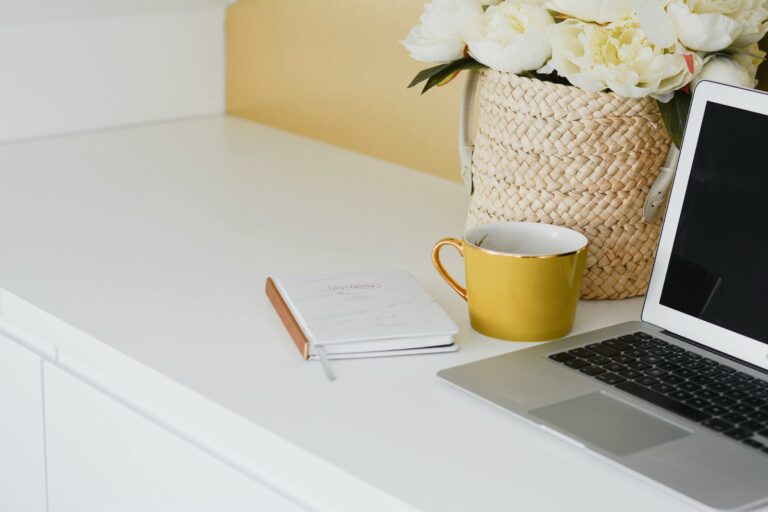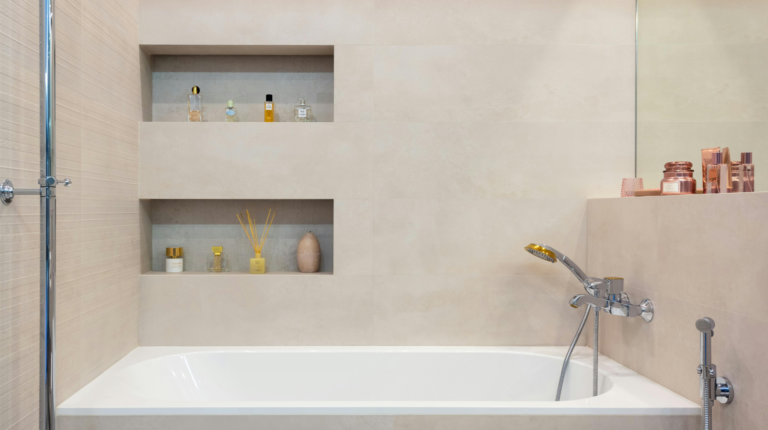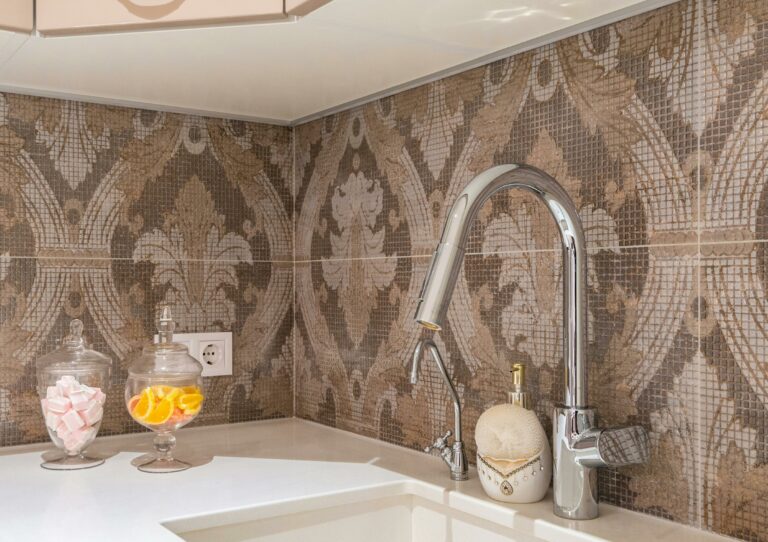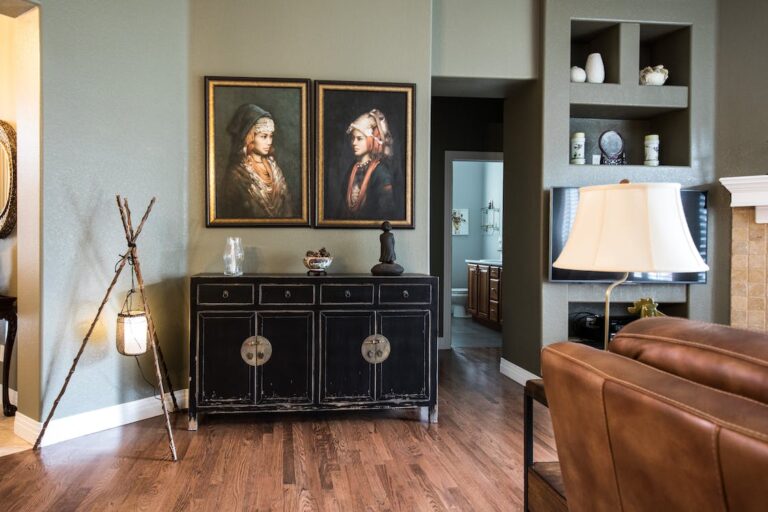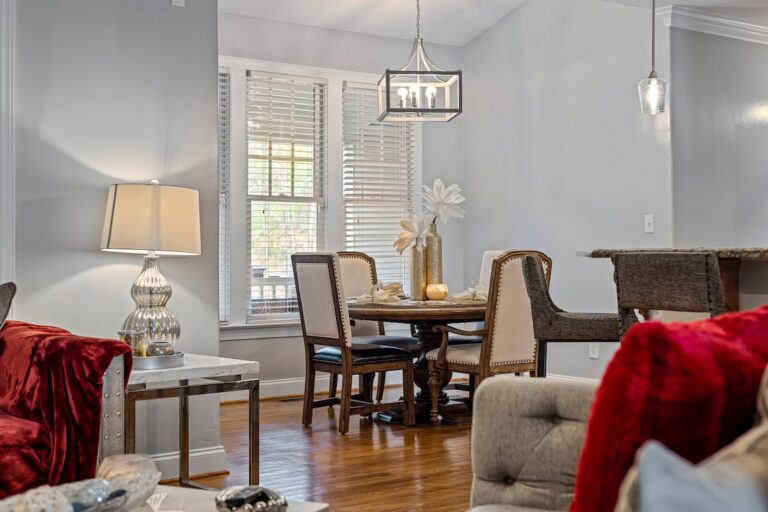Small Space Decoration: Tips for Homeowners
When it comes to decorating small spaces, homeowners often face unique challenges. Limited square footage, cramped layouts, and lack of storage can make it seem like an impossible task to create a stylish and functional living space. However, with the right techniques and strategies, small spaces can be transformed into havens of style and efficiency.
In this article, we will explore the world of small space decoration and provide homeowners with valuable tips and insights to help them make the most of their compact living areas. From choosing the right furniture to utilizing clever storage solutions, we will cover it all. So, whether you’re living in a cozy apartment or a tiny house, get ready to discover the secrets of small space decoration and unlock the full potential of your home. Let’s dive in!
Table of Contents
Understanding Small Space Decoration

In today’s world, where city living is becoming increasingly popular and space is at a premium, understanding how to make the most out of small spaces is essential. Whether you’re living in a tiny apartment or trying to optimize a small office, there are unique challenges and great potential that come with these compact areas. In this article, we will explore both the challenges and the possibilities associated with small spaces.
The Challenges of Small Spaces
Small spaces can present a range of challenges that require careful planning and thoughtful solutions. Here are some common difficulties encountered when dealing with limited square footage:
- Lack of storage: Limited space often means limited storage options. It can be challenging to find enough room for all your belongings without creating a cluttered environment.
- Limited functionality: In a small space, every square inch matters. You need to ensure that each area serves multiple purposes and maximizes its functionality to make the most of the available space.
- Feeling confined: Small spaces can sometimes feel cramped and claustrophobic, especially if they lack natural light or have low ceilings. It’s important to find ways to create an open and airy feel within these confined areas.
- Privacy concerns: In small spaces like shared apartments or open-concept offices, maintaining privacy can be challenging. Finding ways to create separate zones or designated areas for different activities becomes crucial.
The Potential of Small Spaces
While small spaces present unique challenges, they also offer exciting possibilities. Here are some reasons why small spaces decoration can be advantageous:
- Coziness and intimacy: Small spaces have a unique ability to create a cozy and intimate atmosphere. With the right design choices, they can feel welcoming and inviting, providing a sense of comfort.
- Cost-effective: Smaller spaces generally come with a lower price tag, making them more affordable than larger alternatives. This cost-effectiveness can be advantageous for individuals with limited budgets or those seeking to downsize.
- Easier maintenance: Small spaces require less time and effort to clean and maintain. With fewer square footage to tackle, you can spend less time on chores and more time enjoying your space.
- Creative design opportunities: Limited space encourages creativity. With a small area to work with, you’re forced to think outside the box and find innovative design solutions. Small spaces can become showcases for unique and inventive interior design.
To make the most of small spaces, it’s essential to approach them with a creative mindset, thinking strategically about storage, multi-functionality, and maximizing the available space. By understanding the challenges and embracing the potential, you can transform even the tiniest area into a functional and stylish living or working space. So don’t let the size hold you back – embrace the possibilities!
Basics of Small Space Decoration

When it comes to small space decoration, making the most out of every square inch is key. Whether you’re living in a tiny apartment or have a compact room, there are ways to create a stylish and functional space that feels bigger than it actually is. In this article, we will explore two essential aspects of small space decoration: making space seem bigger and maximizing efficiency. Let’s dive in!
Making Space Seem Bigger
Creating the illusion of a larger space is a clever strategy for small space decoration. By incorporating these techniques, you can transform your tiny room into a more spacious and open environment:
- Color palette: Opt for light and neutral colors, such as whites, pastels, and soft grays. These hues reflect more light, making the room feel brighter and more airy. You can also use a monochromatic color scheme to create a sense of continuity and openness.
- Mirrors: Mirrors are a fantastic tool for making a space appear larger. Strategically place mirrors on walls to reflect light and create an illusion of depth. You can also use mirrored furniture or decorative pieces for an added touch of elegance.
- Natural light: Maximize natural light by keeping windows uncovered or using sheer curtains. This allows sunlight to flood the room, creating an expansive and inviting atmosphere. If privacy is a concern, consider installing blinds or shades that can be easily adjusted.
- Furniture placement: Arrange your furniture in a way that promotes flow and openness. Consider using multi-functional furniture pieces like ottomans with hidden storage or a sofa that can also serve as a guest bed. This way, you optimize both space and functionality.
Maximizing Efficiency
Small spaces require clever and efficient storage solutions to keep clutter at bay. Here are some tips to maximize efficiency in your small space decoration:
- Vertical storage: Utilize vertical space effectively by installing shelves, hanging organizers, or wall-mounted cabinets. This not only provides ample storage options but also draws the eye upwards, making the room feel taller.
- Dual-purpose furniture: Invest in furniture that serves multiple purposes. For example, a coffee table with built-in storage or a desk that folds away when not in use. This allows you to make the most of your furniture while keeping the room tidy and uncluttered.
- Smart organizing: Get creative with organizing your belongings. Use storage containers, baskets, or under-bed storage to keep items neatly tucked away. Consider utilizing the space under stairs or unused corners to install built-in shelves or cabinets.
- Minimalism: Embrace a minimalist approach when it comes to decor. Avoid overcrowding the space with too many accessories or decorative pieces. Instead, opt for a few statement pieces that add character without overwhelming the room.
Remember, small space decoration is all about finding creative solutions, making smart choices, and embracing simplicity. By following these tips for making space seem bigger and maximizing efficiency, you can create a visually appealing and functional environment even in the tightest of spaces. Happy decorating!
Also Read : Efficient Kitchen Layouts for Small Spaces: Maximize Functionality
Furniture Selection

When it comes to furnishing your space, choosing the right furniture is crucial. It not only sets the tone for your interior design but also affects the functionality and comfort of your living or working area. In this section, we will explore two types of furniture that are gaining popularity in recent years: space-saving furniture and multipurpose furniture.
Space-Saving Furniture
In today’s fast-paced world, where living spaces are getting smaller, it’s essential to make the most of every square inch. Space-saving furniture is designed with this in mind, offering clever solutions to maximize usable space without sacrificing style or comfort.
Here are a few examples of small space decoration :
- Sofa beds: Who says you can’t have both a sofa and a bed in a small living room? With sofa beds, you can effortlessly switch between seating and sleeping arrangements, saving space without compromising on comfort.
- Foldable tables: These nifty tables can be tucked away when not in use, creating more floor space for other activities. Whether you need a dining table, a study desk, or an extra workspace, foldable tables are versatile and practical.
- Vertical storage: When floor space is limited, think vertically! Vertical storage options like wall-mounted shelves, hanging organizers, and tall bookcases help utilize the height of a room, keeping your belongings neat and clutter-free.
Multipurpose Furniture
Why settle for one function when you can have multiple? Multipurpose furniture combines clever design and functionality, providing versatile solutions for modern living.
Here are a few examples of multipurpose furniture that will add convenience to your space:
- Storage ottomans: These handy pieces serve as both seating and storage. Perfect for smaller living rooms, they offer a place to rest your feet while providing hidden storage for blankets, pillows, or other items.
- Convertible dining tables: Ideal for compact dining areas, convertible dining tables can transform from a small table for daily use into a larger table for entertaining guests. Some models even come with built-in storage compartments.
- Wall beds: Also known as Murphy beds, wall beds are an excellent option for studio apartments or guest rooms. They can be folded up against the wall, freeing up valuable floor space during the day and providing a comfortable sleeping area at night.
- Nesting tables: These sets of tables can be compactly stacked or expanded for additional surface area when needed. They are practical, stylish, and perfect for entertaining guests.
Incorporating space-saving and multipurpose furniture into your space not only provides practical benefits but also adds a touch of creativity and innovation to your interior design. Whether you’re living in a small apartment, a tiny house, or simply want to make the most of your space, these furniture solutions offer both functionality and style.
Remember, when selecting furniture, consider your specific needs, the size and layout of your space, and your personal style preferences. With the right furniture choices, you can create a space that is not only visually appealing but also functional and efficient.
Decor Basics: Colors, Lighting and Mirrors

Whether you’re redecorating your home or designing a new space, understanding the basics of interior decor is essential. Three key elements that can significantly impact the overall aesthetic of a room are colors, lighting, and mirrors. Each of these components has its unique ability to transform a space and create a desired ambiance. Let’s explore how colors, lighting, and mirrors contribute to the art of interior design.
The Power of Color
Color has a profound effect on our mood and perception of a space. Choosing the right colors for your walls, furniture, and accessories can completely change the atmosphere of a room.
Here are a few key things to consider when it comes to color:
- Color Psychology: Colors can evoke different emotions and feelings. For example, warm colors like red and orange can create a cozy and energetic atmosphere, while cooler colors like blue and green can promote relaxation and calmness.
- Color Scheme: Selecting a color scheme that works harmoniously is crucial. You can opt for complementary colors (colors opposite each other on the color wheel), analogous colors (colors that are adjacent to each other), or a monochromatic scheme (variations of a single color).
- Accent Colors: Using accent colors sparingly can add a pop of visual interest and create focal points within a space. It could be as simple as incorporating colorful throw pillows, artwork, or accessories into a predominantly neutral room.
Lighting Magic
Lighting plays a vital role in interior decor by enhancing the overall ambiance and functionality of a room. Well-placed lighting can highlight architectural features, create layers of illumination, and set the mood.
Consider the following lighting aspects:
- Natural Light: Maximizing the use of natural light can make a room feel more spacious and inviting. Choose light and sheer window treatments to allow ample sunlight to filter through.
- Task Lighting: Task lighting serves a specific purpose, such as reading, cooking, or working. Incorporating desk lamps, under-cabinet lighting, or adjustable floor lamps can provide focused illumination where needed.
- Ambient Lighting: Ambient lighting refers to the overall illumination of a room. This can be achieved through overhead fixtures, chandeliers, or recessed lighting. Dimmer switches can help control the intensity of the light and create different moods.
- Accent Lighting: Accent lighting is used to highlight specific architectural details, artwork, or decorative elements. You can achieve this effect with spotlights, wall sconces, or directional track lighting.
The Effect of Mirrors
Mirrors are incredible design elements that can visually expand a space, amplify natural light, and create a sense of depth.
Here are a few ways mirrors can elevate your decor:
- Illusion of Space: Placing mirrors strategically can make a room appear larger than it actually is. Consider hanging a large mirror opposite a window to reflect the outdoors and bring more light into the room.
- Light Reflection: Positioning mirrors near light sources can bounce light around the room, making it feel brighter and more vibrant. Reflective surfaces, such as mirrored furniture or decorative objects, can also achieve this effect.
- Statement Pieces: Mirrors come in various shapes, sizes, and frames, allowing them to serve as stunning focal points. A large ornate mirror or a collection of smaller mirrors arranged in a gallery-style can add both function and aesthetic appeal to any space.
By understanding the impact of colors, lighting, and mirrors in interior decor, you can create a space that not only looks visually appealing but also reflects your personal style and enhances your overall well-being. Experiment with different combinations, and don’t be afraid to let your creativity shine through. Happy decorating!
Want to learn more about color psychology in interior design? Check out our article on Understanding Color Psychology in Interior Design.
Space Solutions: Shelves, Vertical Spaces, and Storage

Having limited space in a home can often lead to clutter and a lack of organization. However, there are several innovative solutions to optimize space utilization and keep belongings neat and accessible. In this article, we will explore three effective strategies: shelves, vertical space usage, and hidden and smart storage solutions. Let’s delve into each of these categories and discover how they can transform your living space.
Shelf Magic
Shelves are a versatile storage solution that can be customized to suit your specific needs. They not only provide ample storage space but also add a decorative element to any room. Whether it’s a bookshelf in the living room or floating shelves in the kitchen, shelves are an excellent way to maximize your available space.
Here are a few key benefits of incorporating shelves into your home:
- Easy accessibility: Unlike traditional storage units like cabinets or drawers, shelves offer quick and easy access to your belongings. Items are visible and within reach, making it effortless to find what you need when you need it.
- Display and decor: Shelves are not just for storage; they can also serve as a platform for displaying your treasured items, such as books, artwork, or decorative pieces. This not only adds a personal touch to your space but also saves you from cluttering up other surfaces.
- Utilizing vertical space: By installing shelves on your walls, you can take advantage of often overlooked vertical space. This allows you to optimize storage without sacrificing valuable floor space.
Vertical Space Usage
When it comes to maximizing storage in a small area, it’s essential to think vertically. Vertical space usage involves utilizing the height of a room to add storage or incorporate functional elements. This technique is particularly effective in rooms with high ceilings or limited floor space.
Here are a few ways to make the most of your vertical space:
- Tall storage units: Invest in tall storage units such as floor-to-ceiling bookcases, armoires, or wardrobes. These provide plenty of storage while utilizing vertical space effectively.
- Hooks and hanging organizers: Install hooks on walls or doors to hang items such as coats, bags, or accessories. Additionally, consider using hanging organizers in closets or bathrooms to store toiletries or small items, keeping them off the floor and within reach.
- Vertical shelving systems: Opt for vertical shelving systems that stack modules one on top of another. These systems can be customized to fit your space and offer ample storage for clothing, shoes, or other items.
Hidden and Smart Storage Solutions
If you’re looking for storage options that are both functional and discrete, hidden and smart storage solutions are the way to go. These innovative designs blend seamlessly into your living space, providing ample storage without compromising on aesthetics.
Here are a few examples of hidden and smart storage solutions:
- Under-bed storage: Utilize the space under your bed by investing in storage containers or drawers specifically designed to fit under the mattress. This is a great solution for storing seasonal clothing, extra linens, or even shoes.
- Multifunctional furniture: Look for furniture pieces with built-in storage compartments, such as ottomans with hidden storage, coffee tables with lift-up tops, or beds with drawers underneath. These pieces serve a dual purpose, providing functionality while keeping your belongings out of sight.
- Wall-mounted storage: Install wall-mounted storage options like foldable desks, drop-down tables, or wall-mounted cabinets. These space-saving solutions can be folded away or tucked into the wall when not in use, freeing up valuable floor space.
Incorporating shelves, maximizing vertical space, and utilizing hidden and smart storage solutions are excellent ways to transform your home into an organized and clutter-free oasis. By implementing these space-saving strategies, you can optimize the use of your available space while maintaining a stylish and efficient living environment. So go ahead, explore these options, and unlock the potential of your space!
Final Thoughts: Maintaining Functionality and Style
After all the tips and tricks shared in this article, it’s important to emphasize the significance of maintaining both functionality and style in small space decoration. While the challenges of limited space require creative solutions, it’s equally important not to sacrifice the overall aesthetic appeal of your home.
Remember that functionality doesn’t have to mean sacrificing style, and vice versa. With careful planning and attention to detail, you can create a small space that not only maximizes efficiency but also reflects your personal taste and style.
Here are some key takeaways as you embark on your small space decoration journey:
- Prioritize your needs: Before getting caught up in the excitement of decorating, take a step back and assess your needs. Consider how you will be using the space and prioritize what’s most important to you. This will help you make informed decisions about furniture, layout, and storage solutions.
- Maintain a cohesive design: While it’s important to make the most of limited space, try to maintain a cohesive design throughout your home. Choose a color palette and stick to it, ensuring that each room flows seamlessly into the next. This will create a sense of harmony and continuity, making your small space feel larger and more put together.
- Declutter and organize: Clutter can quickly make a small space feel cramped and overwhelming. Regularly declutter your home and find smart storage solutions to keep everything organized. Utilize shelves, vertical spaces, and hidden storage options to maximize every inch of your space.
- Incorporate functional furniture: Investing in space-saving and multipurpose furniture is essential for small space living. Look for pieces that serve more than one purpose, such as a sofa that converts into a bed or a coffee table with built-in storage. This will help you make the most of your limited square footage.
Remember, creating a stylish and functional small space is all about balance. Take the time to carefully plan and consider your options, and don’t be afraid to think outside the box. With the right approach, you can transform your small space into a cozy and inviting home that meets all your needs.
At Arkitecture Today, we’re passionate about helping homeowners make the most of their small spaces. Check out our website for more articles, tips, and inspiration for your home and interior design needs.
Frequently Asked Questions
- What are some small space decoration tips for homeowners?Some small space decoration tips for homeowners include: 1. Utilize vertical space with shelves or wall-mounted storage, 2. Opt for multi-functional furniture, 3. Use light and neutral colors to create an illusion of a larger space, 4. Utilize mirrors to reflect light and create an illusion of space, and 5. Declutter and organize to maximize the available space.
- How can I make a small room look bigger?To make a small room look bigger, you can: 1. Use light and neutral colors on walls and furniture, 2. Incorporate mirrors to create an illusion of space, 3. Remove unnecessary furniture and clutter, 4. Use strategic lighting to brighten up the room, and 5. Opt for furniture with legs to create a sense of openness.
- What are some space-saving furniture options for small space decoration?Some space-saving furniture options for small space decoration include: 1. Folding tables and chairs, 2. Wall-mounted desks or drop-leaf tables, 3. Sofa beds or futons, 4. Storage ottomans or coffee tables, and 5. Floating shelves or wall-mounted storage units.
- How can I maximize storage in a small space?To maximize storage in a small space, you can: 1. Utilize vertical space with shelves or tall storage units, 2. Use storage baskets or containers to keep items organized, 3. Install hooks or racks on walls for hanging items, 4. Utilize under-bed or behind-the-door storage solutions, and 5. Invest in furniture with built-in storage compartments.
- Can I still decorate a small space without overwhelming it?Yes, you can decorate a small space without overwhelming it by: 1. Choosing a cohesive color scheme, 2. Keeping decor minimal and purposeful, 3. Using mirrors and lighting strategically, 4. Incorporating plants for a fresh and airy feel, and 5. Embracing multi-functional furniture to save space.


